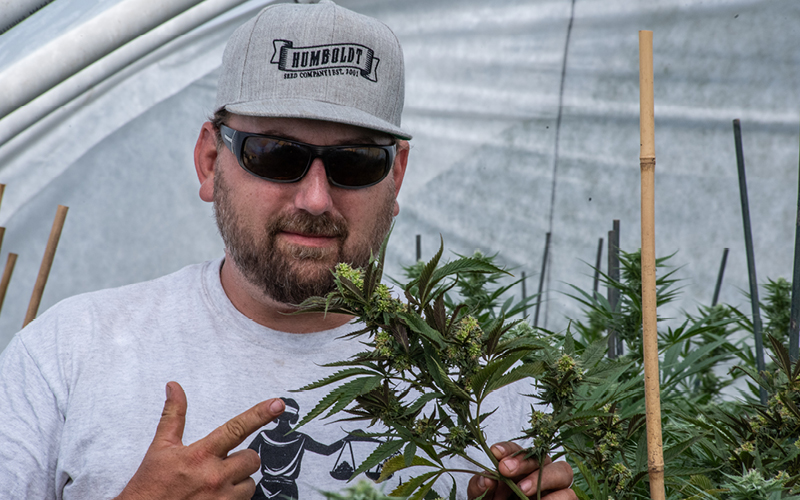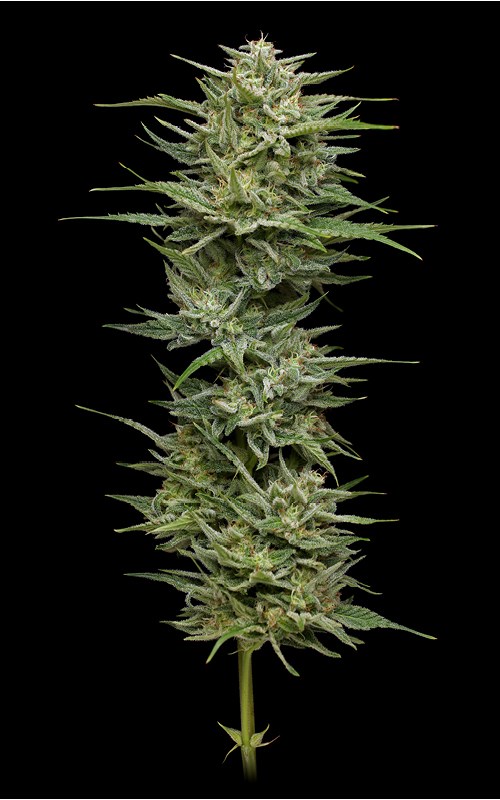
Why Feminized Seeds are Better
By Nathaniel Pennington
Published: August 24, 2022
In 1995 I moved to Humboldt County from the east coast as an 18 year old and shortly thereafter started breeding cannabis. My motivation to make seeds at the time wasn’t so much based on becoming a cannabis breeder as it was simply the desire to be self-reliant for the next growing season. There was certainly no such thing as a cannabis nursery and the garage and basement-based clone market was unreliable and wrought with pests and pathogens. I had quickly discovered the advantages of growing from seed — phenomenal vigor, taproot development, being able to plant outside well before June without supplemental lighting, lack of pests and viruses… the list goes on. I’d also learned to work with the major disadvantage commonly associated with seed: male and female plants. I would just simply plant more than twice as many seeds as I needed for my grow.
Over the years I became a sexing machine — I could identify the plant’s sex incredibly early in its development (not what you may have thought I meant!). Regardless, it was a good system for the time. The price of cannabis was such that it easily justified the waste of space and effort associated with discarding the male plants. I was breeding my own seed from selected plants that produced the best cannabis I’d seen, keeping elite male plants that were selected for structure and the stem rub method (common canna breeder’s trick for getting a sense of terpenes in male genetics). I thought I had it all and after several years of good feedback on the seeds that I’d shared around Humboldt County I went down to the courthouse, filed the paperwork and started.
Hear The Backstory
It was between 1998 and 2010 that I strictly bred regular seeds. I was happy with the product we were creating, and it fit well with our community of seasoned cannabis growers who had no problem sexing male and female plants. Our focus as a company was, by then, on uniformity in seed batches so that as the flower buyers were increasing their orders and the farmers using seed could still have uniform products. We were honing in strains like OG Kush and our Blueberry Muffin so that every plant grown from our seed could be batched together in the ever-increasing increments of sale (10lbs, 20lbs, 100lbs). The cannabis community of California was in the early stages of its transition from counterculture to subculture to full blown agriculture with all the pressures that come along with cultivating what was becoming a commodity crop.

Nathaniel Pennington, Humboldt Seed Co. Founder + CEO
A Different Kind of Genetics
Along with breeding cannabis, my life’s work has been working on restoring salmon populations here in Humboldt County. In the early 2000s before cannabis was accepted the way it is today, Humboldt Seed Co. wasn’t able to advertise its work too much for fear of arrest. I spent most of my time back then writing grants and overseeing local salmon monitoring programs. I had a crew of 10 scientific aides walking rivers and streams counting fish and collecting samples. In 2006 I wrote and received a grant from the State of California for $90,000 to do a genomic study on two types of salmon that I’d hypothesized were significantly different enough to warrant endangered species protections. Many years later, through intensive genetic mapping, that work proved successful for the protection of spring run salmon in the Klamath Basin.
While I was spending time in university laboratories unraveling salmon genes, I spent any free moments I could find sequencing cannabis DNA. One of the points was to answer a question that had plagued me for some time: Does the process of making feminized seed increase the propensity for hermaphroditism or in any way damage the gene pool for future generations?
Cannabis Sex Ed
Like any other plant, cannabis reproduces when pollen leaves the male of a flower and comes in contact with the stigma or pollen tube (white hairs on cannabis), traveling down to a female ovule which forms a seed through meiosis. Cannabis is fairly unique in that its male and female flower parts mostly appear on separate plants, referred to as dioecious. Most plants possess male and female organs on the same plant (monoecious). Cannabis has evolved mostly as a wind-pollinated plant and the male plants that grew healthier and taller had a better chance of reproduction. The male plant’s pollen would pass Save on its XY chromosomes and the female plants would pass their XX chromosomes, making sex determination an inheritable coin flip of 50-50 male and female seed.
Feminized Seeds
Feminized seeds are made through a process that prevents an otherwise female plant from producing the female flowers that its XX chromosome instruct it to, forcing it to produce the default male flowers, but since these flowers come from female plants the pollen they produce only possesses XX chromosomes, making the coin flip go to team female every time. Basically, by applying the element silver at a specific time to a flowering female you can make female pollen and from that create a crop of all female seed. But, I wondered, is this some kind of GMO or shortsighted technology that will bite us in the butt later down the road?
I was actually quite surprised by what I’d found. There was no evidence whatsoever that there would be any downstream effect from the feminization process as long as the female plant that we select to turn into a male is not being selected for its propensity to produce male flowers. It took some time to develop methodologies that would allow any female from any strain to become a pollinator, but we’re now at a point where there’s no question that a plant is usable as a pollinator as long as it is a natural diploid.

Hella Jelly | Credit: Humboldt Seed Co./Erik Christiansen
We haven’t seen any increases in intersex traits through our studies and even repeated feminizing from generation to generation hasn’t had any observable negative effect. In contrast, what we’ve discovered is that through feminized breeding we’re able to have a much greater influence over the outcome of our breeding. No more sniffing stems to imagine how the genetic makeup of a male would express itself as a female. We can take a selected plant that produces gorgeous female flowers and coax it to produce pollen that carries its gorgeous traits onto another selected female to reproduce or even onto itself as an untreated clone. This process, known as selfing, has allowed us to create seed lines that are much more uniform and flowers that are higher in cannabinoids and terpenes.
Public Opinion
Public opinion of feminized seed can vary. Some of that sentiment is likely due to the fact that early attempts at feminizing were selecting for the ease of the sex reversal process and therefore likely passing on those intersex traits. The feminized seeds of today, however, are likely superior and certainly easier to grow than regular seed and we encourage breeders that, like us, bred regular seed for years trying to make fems. The process is certainly more technical but we’re confident that you will enjoy the outcome along with anyone else who grows your genetics.






